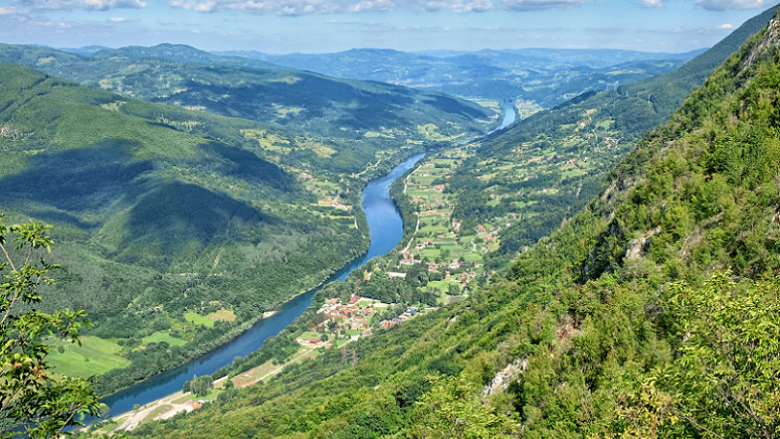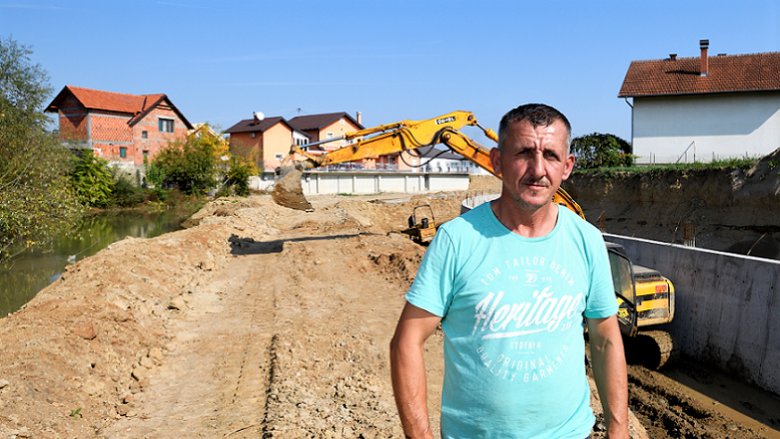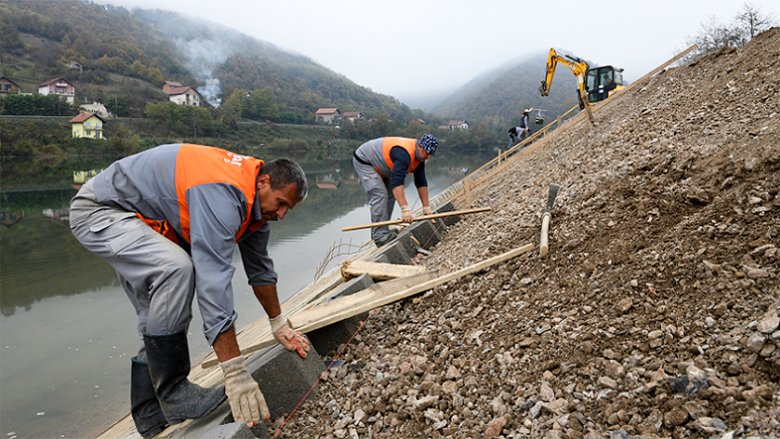Synopsis
The West Balkans Drina River Basin Management fostered long-term, cross-border cooperation on basin planning and management of critical resources in the Drina River Basin. It also provided enhanced protection from droughts and floods in the basin. Through trans-boundary action plans and modelling, data collection and sharing, and pilot investments and grants, the project directly benefited over half a million residents of riparian municipalities in Serbia, Montenegro, and Bosnia and Herzegovina who live in flood- and drought-prone areas in the Drina River Basin. It indirectly benefited the basin’s entire ecosystem and all its water users, including one million inhabitants in 57 municipalities.
Challenge
The Drina River Basin is ecologically rich and has major untapped economic potential from hydropower, fisheries, and tourism. But its floods and droughts also pose a major risk to the three countries it spans. For instance, a series of deluges in 2014 swept away an estimated 15 percent of Bosnia and Herzegovina’s GDP. The frequency and scope of extreme wet and dry episodes in the basin have increased in recent years, and climate change is likely to further accentuate these peaks and troughs.
Authorities in Bosnia and Herzegovina, Montenegro, and Serbia have acknowledged that the Basin’s people and economy need effective, long-term, and transboundary cooperation to effectively manage the drought and flood risks. But there is limited cross-border capacity to manage natural disaster risks and coordinate climate change adaptation. The region’s history of conflict also hindered the trust and communication needed for institutions to build transboundary models, share data, and achieve integrated water resource management.
Approach
The World Bank was uniquely positioned as a moderator among countries to build trust and promote transboundary communication and cooperation. This convening power was key to achieving the joint implementation of the Drina River Basin Management Project by Bosnia and Herzegovina, Montenegro, and Serbia.
Another cornerstone of the project was leveraging knowledge for integrated water resources management. In the past, the three countries exchanged almost no hydro-meteorological information. The project funded new data collection equipment and established protocols and institutional channels for sharing this essential input for modelling and forecasting, planning, disaster response, and management.
Climate adaptation was a cross-cutting theme of the project. It integrated climate considerations into the Strategic Action Plan for managing the basin, and adaptations were a primary focus of pilot investments, small grants, and awareness building activities.
Results
The project contributed towards enhanced coordination among the riparian countries for effective flood and drought risk management.
For joint water resource planning, the project contributed towards the following:
- Developed the Strategic Action Plan, which was endorsed at the ministerial level in all three countries in 2021. This plan:
- establishes an integrated environmental monitoring system at the basin level
- promotes coordinated management of groundwater resources
- conserves natural values, with a focus on aquatic ecosystems
- Developed and implemented a hydrological and hydraulic model for reservoir operations, forecasting, and decision-making.
- Conducted the Water Resources and Basin Study and Study on the Pollution of the Drina River Basin to further cross-border cooperation on conservation, climate adaptation, and hydropower
To enhance trans-boundary management, the project contributed towards the following results:
- Formed and operationalized the Drina Task Force (DTF) as an inter-agency and international channel for cooperation
- Collected and shared hydro-meteorological data and established physical and institutional systems so this information continue to flow. Specifically, it:
- Strengthened the capacity of the countries’ hydro-meteorological services to collect and share data
- Procured and implemented new monitoring equipment, including 14 automatic meteorological stations, 38 automatic precipitation stations, and 30 automatic hydrological stations
The project also successfully boosted climate adaptation through pilot projects, small grants, and a public awareness campaign on the need to protect and manage the basin’s abundant natural resources. It disbursed 49 small grants for conservation, ecotourism, pollution prevention, and other objectives.
The project directly benefitted 500,000 members of flood- and drought-prone communities in the Drina River Basin, as well as residents of the 33 riparian municipalities that profit from the project’s pilot investments, small grants, and public awareness campaign. It indirectly benefited the basin’s entire ecosystem and all its water users, including 1 million inhabitants in 57 municipalities.
Bank Group Contribution
The project was financed by an $8.63 million grant by the World Bank.
Partners
The project took place against a backdrop of collaboration on integrated water resource management by the World Bank, European Union, the Global Environment Facility, and Special Climate Change Fund. It also leveraged the institutional structure of existing transboundary basin management partnerships, such as the international Sava and Danube commissions.
Looking Ahead
Transboundary cooperation on integrated water resource management is a lengthy process requiring continuous external support over years or decades. The project has opened the gates to this continued collaboration. For instance, the Sava and Drina Rivers Corridors Integrated Development Program (SDIP, P168862), an investment operation with Bosnia and Herzegovina, Montenegro, and Serbia, was approved by the World Bank in August 2020. Phase II of the SDIP, will finance investments identified in the Strategic Action Plan.


